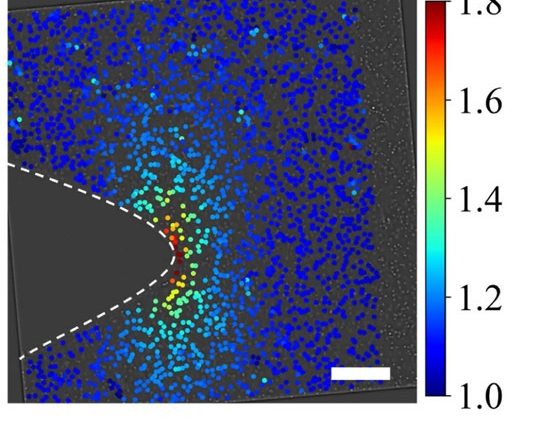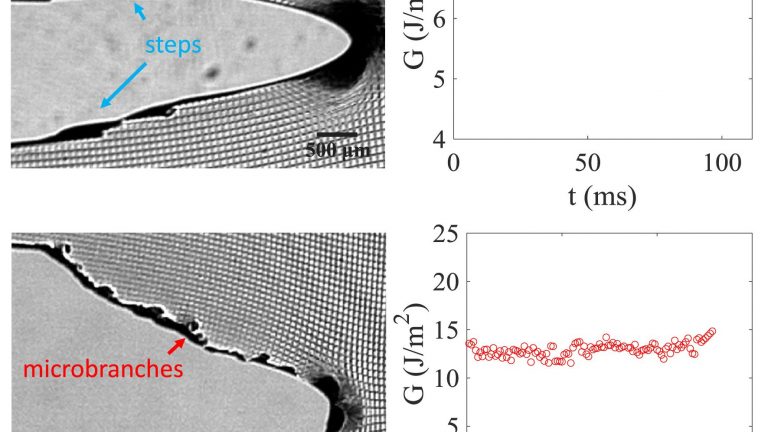3D crack propagation
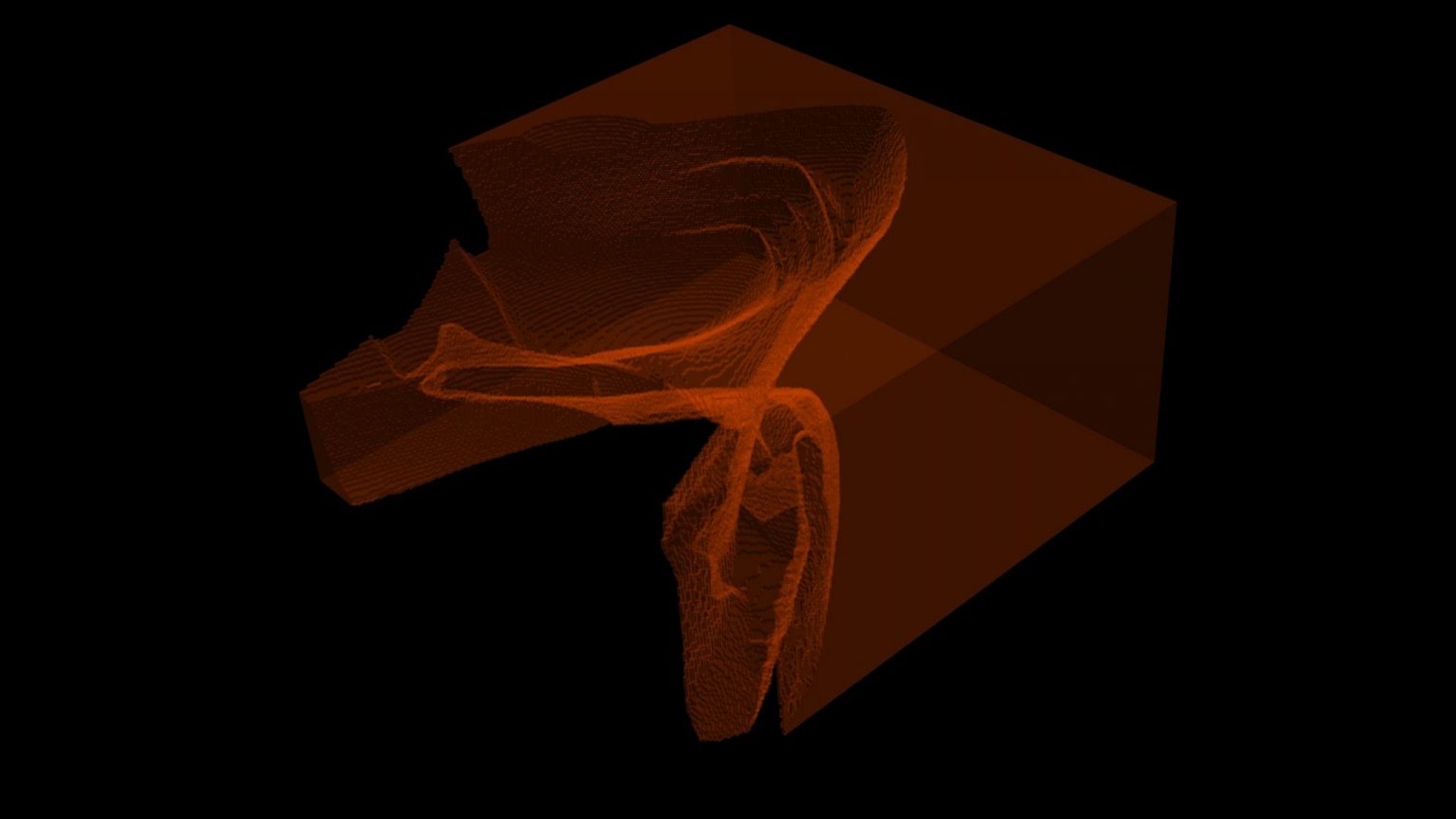
A rendering of 3D crack front data in a brittle hydrogel recorded with a confocal fluorescence microscope.
In our work on fracture, our ultimate goal is to improve the fracture resistance of materials, especially those that are `brittle’ – this is one of the longest-standing endeavors of engineering science. How do we work to address this problem with our research?
- Direct, 3D observation of very near-tip crack kinematics
- A focus on stability of the crack front and its consequences for toughness
- Probing the interplay of geometry and inclusions in crack propagation and stability
Much of our work on 3D cracks is centered on how a crack in a thin sheet of material can break its planar symmetry – and thus become more 3D, as the illustration above shows. To this end, we have adapted and improved the resolution of 3D kinematic data, including full-field measurements with particle tracking.
Read on to learn more – for details, see our publications.
The process zone scale in brittle hydrogel fracture
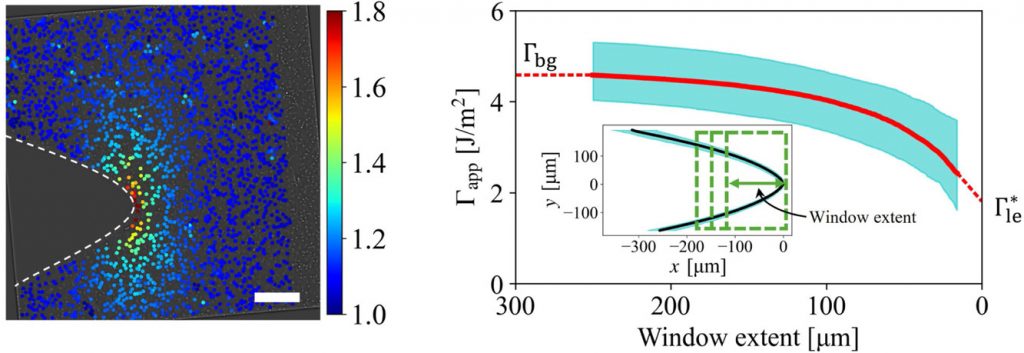
High-resolution measurements of the near-tip deformation field in slow cracks propagating in hydrogels reveals a localized region of energy dissipation, where the fracture process occurs. The decrease in fracture energy near the crack tip throughout this zone was measured two ways: first with the J-integral obtained from particle tracking measurements and a neo-Hookean material model, where the integral was evaluated on smaller domains near the crack tip, and second by directly evaluating the CTOD with a shrinking window near the crack tip. The results of these two methods are consistent, and show a decreasing value of the fracture energy, as well as a constant value near the crack tip that is in strikingly good agreement with the Lake-Thomas prediction.
Hidden 3D structure unveils energy balance
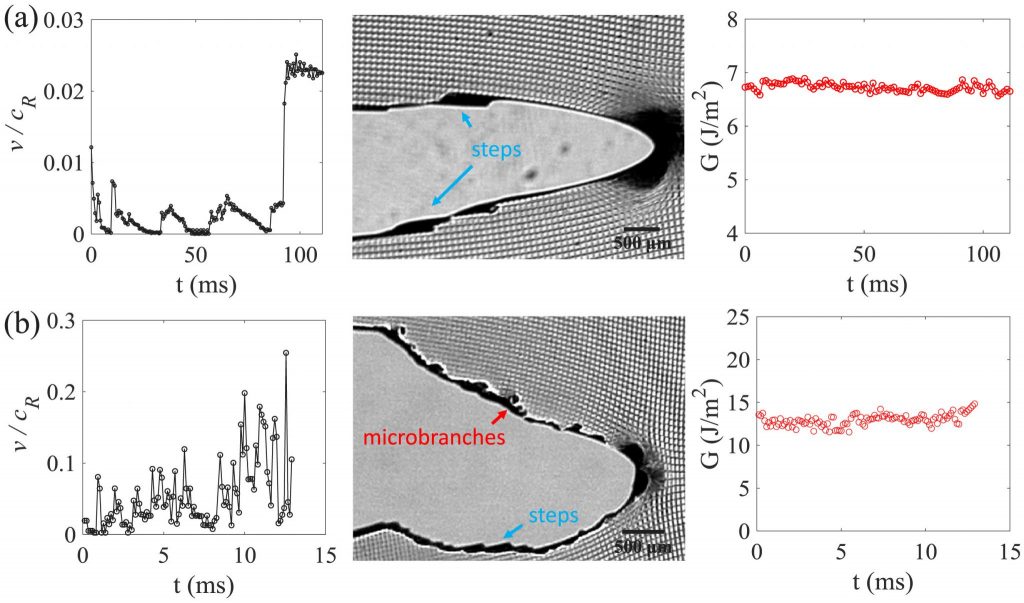
When materials are tested in an ostensibly planar configuration, careful consideration of the crack front morphology must be made in the interpretation of the fracture data. With this work, we show why that is – and specifically, how one can arrive at different values of the apparent fracture energy due to local features along the crack front. This work was carried out in collaboration with Meng Wang, Mokhtar Adda-Bedia, and Jay Fineberg.
3D particle tracking with quantified error
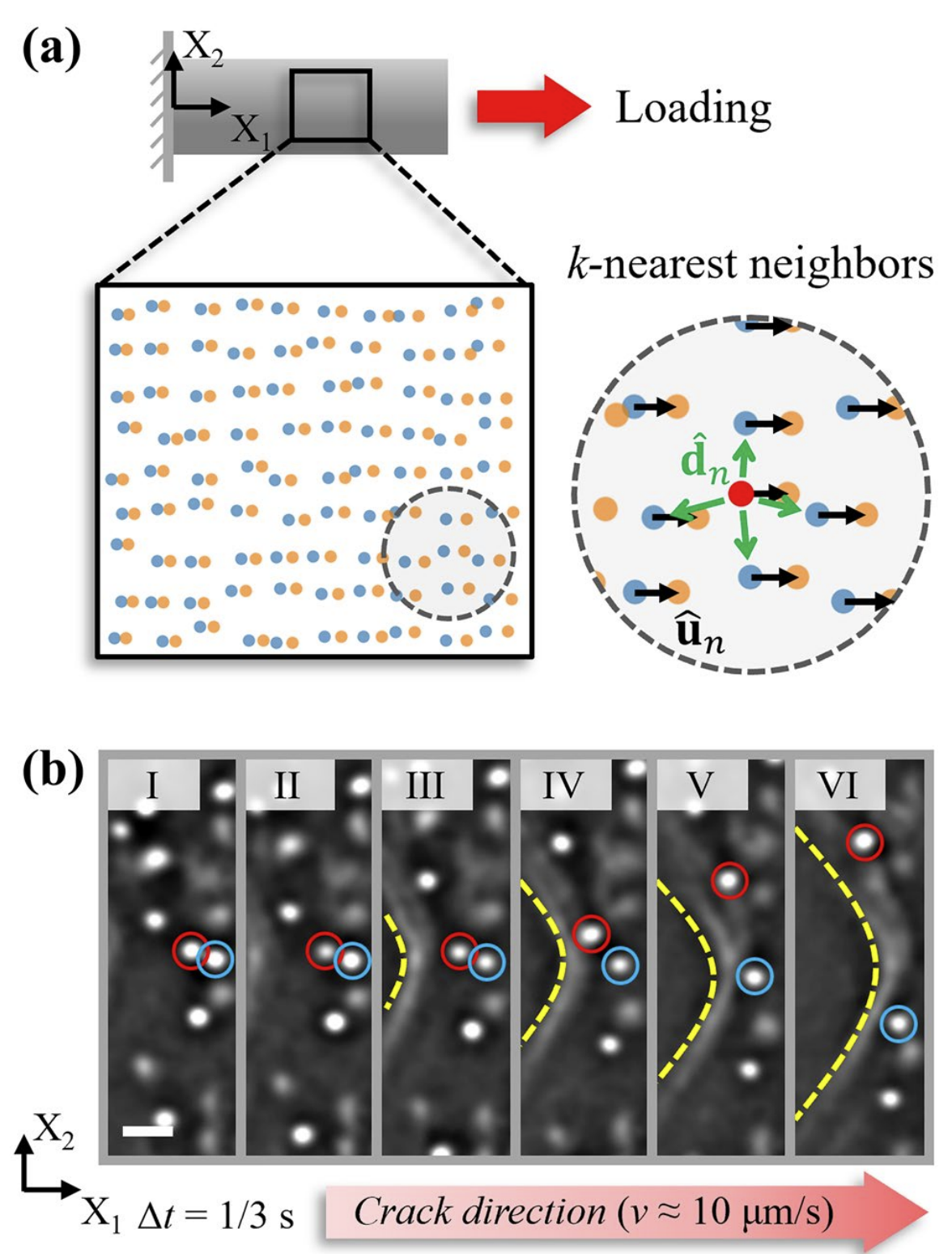
With microscopic measurements, the trajectories of small, optically scattering particles are tracked; from the displacement data, a least-squares routine is applied to obtain measurements of the deformation gradient tensor components. The accuracy of the method is evaluated using simulated data, and then compared with experimental data; scaling of the error is evaluated and presented. This method stands to significantly augment the tools available to the researcher in solid mechanics, beyond planar measurements to fully-3D methods. Such data are typically only available by numerical simulation, and can be extremely valuable in the field of mechanics, as well as the field of materials science.
